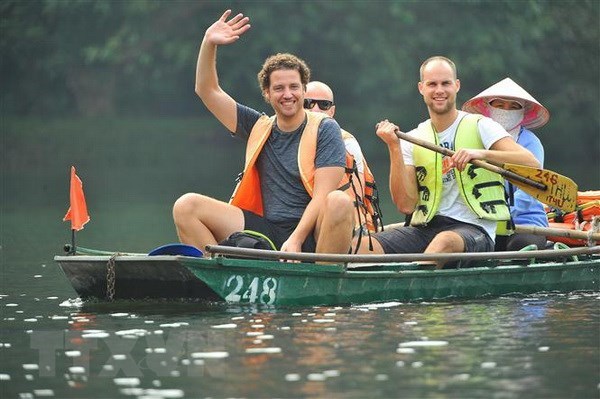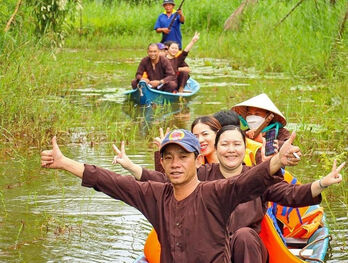
Foreign tourists in a boat tour around Trang An Complex, Ninh Binh province (Photo: VNA)
The number of foreign holidaymakers rose 9.3 percent against December, with a strong surge seen the flow of tourists from Europe, America and Oceania as overseas Vietnamese have come home for the traditional Lunar New Year (Tet) while in some European and American countries, people have higher demand for travelling abroad during their winter holidays.
In the month, visitors from Asian markets accounted for the lion’s share with over 1.1 million people, a 5.4 percent climb from the same period of 2018. The Republic of Korea (RoK) surpassed China to become the largest source of foreign holidaymakers of Vietnam.
Tourists from most of the major markets of Vietnam increased, including Thailand (39.7 percent), Taiwan (31.4 percent), the Philippines (20 percent), Indonesia (18.7 percent), Japan (11.3 percent), and Malaysia (9.4 percent). Meanwhile, visitors from China, Singapore, Cambodia and Laos experienced decreases of 10.7 percent, 2.5 percent, 61.3 percent and 27 percent, respectively.
The number of tourists from Europe witnessed a slight growth of 3.1 percent, with visitors from Russia rising 2.2 percent, the UK 3.9 percent, France 1.3 percent, Germany 3.9 percent, Sweden 6 percent and Italy 3.9 percent.
The number of visitors from America and Oceania expanded 7.8 percent and 0.2 percent, respectively.
Some 6.6 million Vietnamese people spent their holidays domestically.
Tourism revenue in the month reached 56.5 trillion VND (2.44 billion USD), or 6.6 percent higher than the same month last year.
This year, Vietnam aims to serve 18 million foreign visitors and 85 million domestic ones in 2019, and earn more than 700 trillion VND (30.2 billion USD) from tourism.
To attract more foreign holidaymakers, the Vietnam National Administration of Tourism (VNAT) has enhanced tourism promotion activities and information provision.
Vietnam’s tourism sector had a successful 2018 with numerous achievements. However, it should move to handle such challenges as low-cost tours or the so-called “zero dong” tours, quality human resources, food safety and hygiene, and environmental pollution, among others./.
VNA
 Mekong Delta ramps up cultural, tourism events to hit visitor goals
Mekong Delta ramps up cultural, tourism events to hit visitor goals



